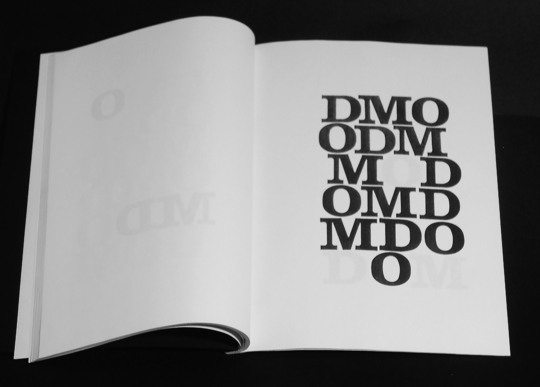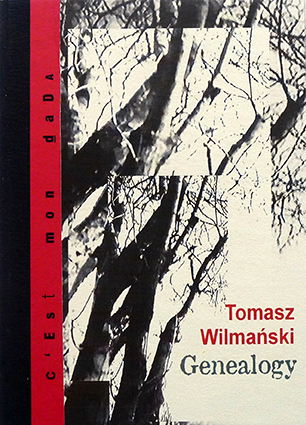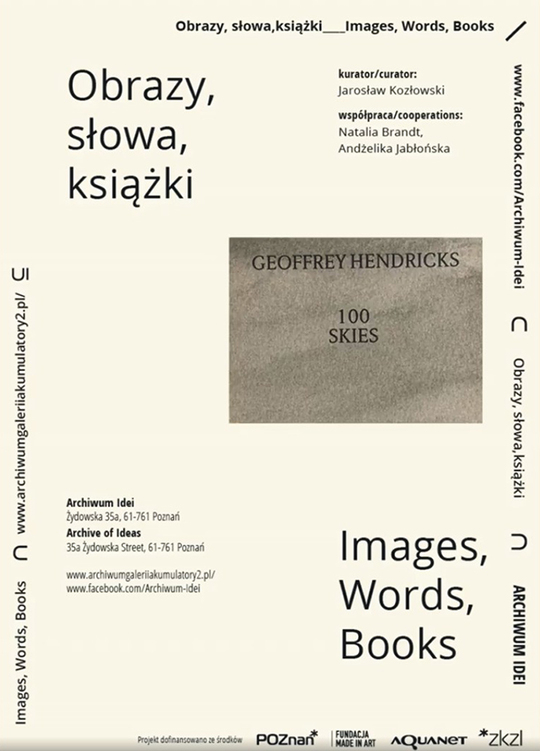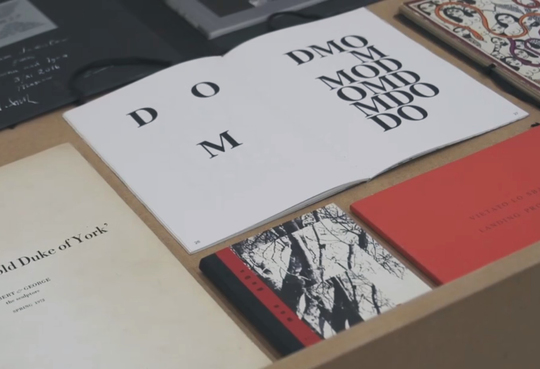-
fragment ekspozycji
-

MOD 2
-

Genealogy
GROUP SHOWS
Obrazy, słowa, książki /
Images, Words, Books
Archiwum Idei
ul. Żydowska 35a, Poznań
website: archiwumgaleriiakumulatory2.pl
Luty – Kwiecień 2021
Eksponowane prace i książki artystyczne to fragment kolekcji Archiwum NETu, zawężony do zagadnienia obecności „tekstu” w sztuce współczesnej. Książka jako medium wypowiedzi artystycznej okazała się w latach 70. (a także i później) znakomitym narzędziem manifestowania postawy kontestującej kanony modernistycznej sztuki i jej zinstytucjonalizowanych form społecznego funkcjonowania. Wydawane zazwyczaj własnym sumptem w niewielkim nakładzie, sprzedawane za grosze w niszowych księgarniach bądź rozdawane wśród przyjaciół, książki uniezależniały artystów od komercyjnych spekulacji rynku sztuki, negowały także status galerii jako niezbędnego ogniwa pośredniczącego w dialogu z odbiorcą. Charakteryzowała je bowiem specyficzna nośność jako komunikatu trafiającego bezpośrednio do indywidualnego adresata/odbiorcy/czytelnika. W krajach wschodnio-europejskich były natomiast często jedyną możliwością dystrybucji niepokornych idei artystycznych.
Czytanie tych książek wymaga szczególnej uwagi i wyobraźni, ponieważ pisane są językiem hybrydowym, który drwi sobie z ograniczeń gatunkowych i bywa konglomeratem wyrażeń zaczerpniętych zarówno z szeroko pojmowanej literatury jak i z retoryki sztuk wizualnych. Tekst nie jest w nich opisem dopełniającym obraz, obraz nie pełni w nich funkcji ilustracyjnych. Płynna tożsamość tych książek, niechętnie poddających się próbom jakiejkolwiek systematyzacji, doskonale spełnia postulat wolności ich autorów i wolności ich czytelników.
kurator: Jarosław Kozłowski
The works and art books on display represent a fragment of the NET Archive collection, limited to the question of the presence of 'text' in contemporary art. In the 1970s (and later), the book as a medium of artistic expression turned out to be an excellent tool for manifesting the standpoint of protesting the modernist canon of art and its institutionalised forms of social functioning. Usually published at the authors' own expense, sold for pennies in niche bookstores or distributed among friends; the books made artists independent of commercial speculation on the art market, they also undermined the status of the gallery as an indispensable link in the dialogue with the recipient. They had a unique capacity for conveying messages directly to the individual addressee/receiver/reader. In Eastern European countries, on the other hand, they were often the only way of distributing rebellious artistic ideas.
Reading those books calls for close attention and vivid imagination as they are written with a hybrid language that mocks genre limitations and happens to be a conglomerate of expressions borrowed both from broadly construed literature and the rhetoric of the visual arts. The text here is not a description that adds to the image and the images are not fully illustrative. The fluid identity of the books, hardly yielding to attempts at systematising, fittingly meets the demand of the freedom of their authors and of the freedom of their readers.
Curator: Jarosław Kozłowski

